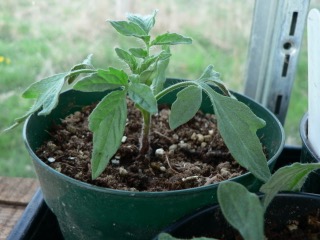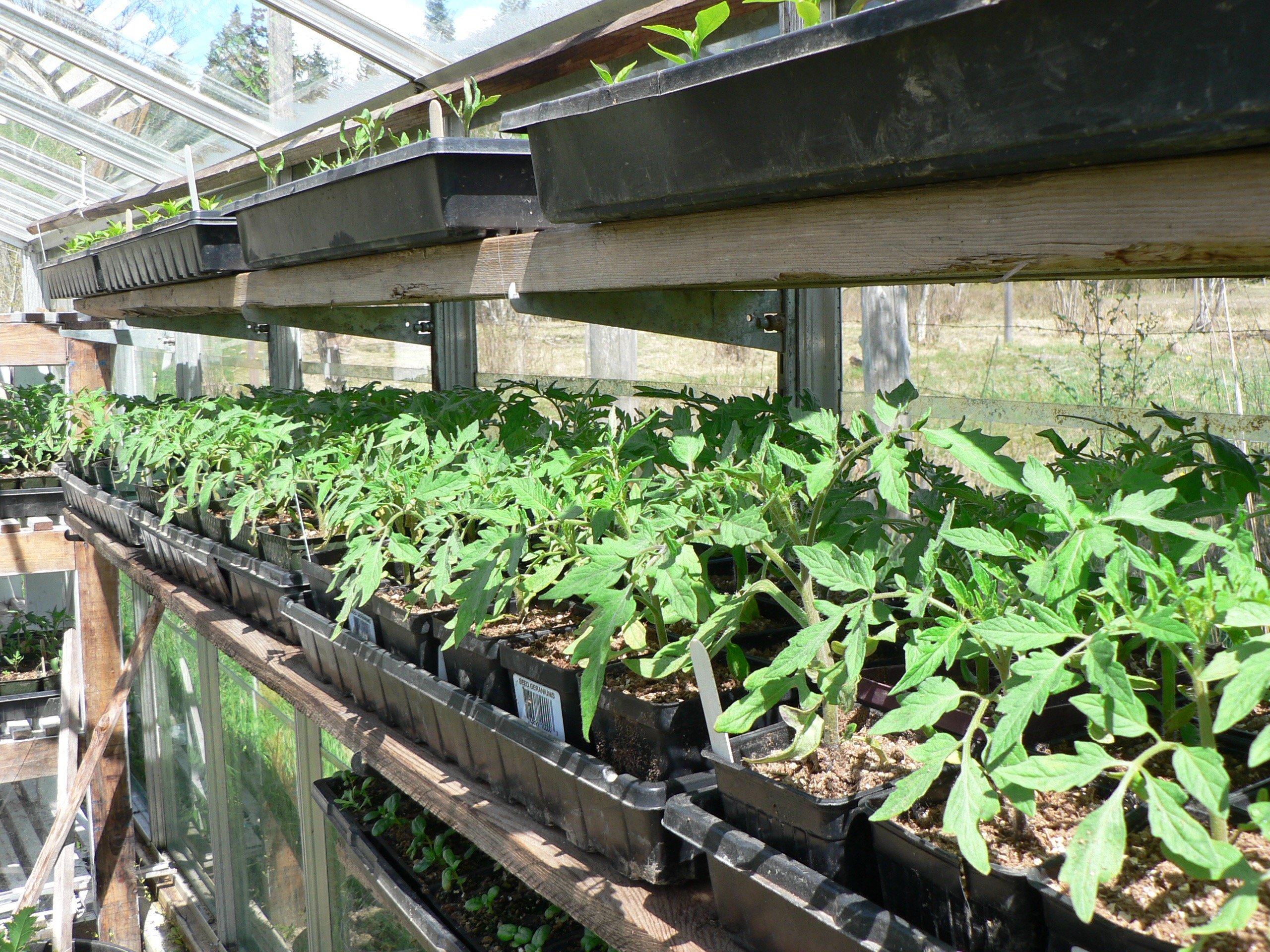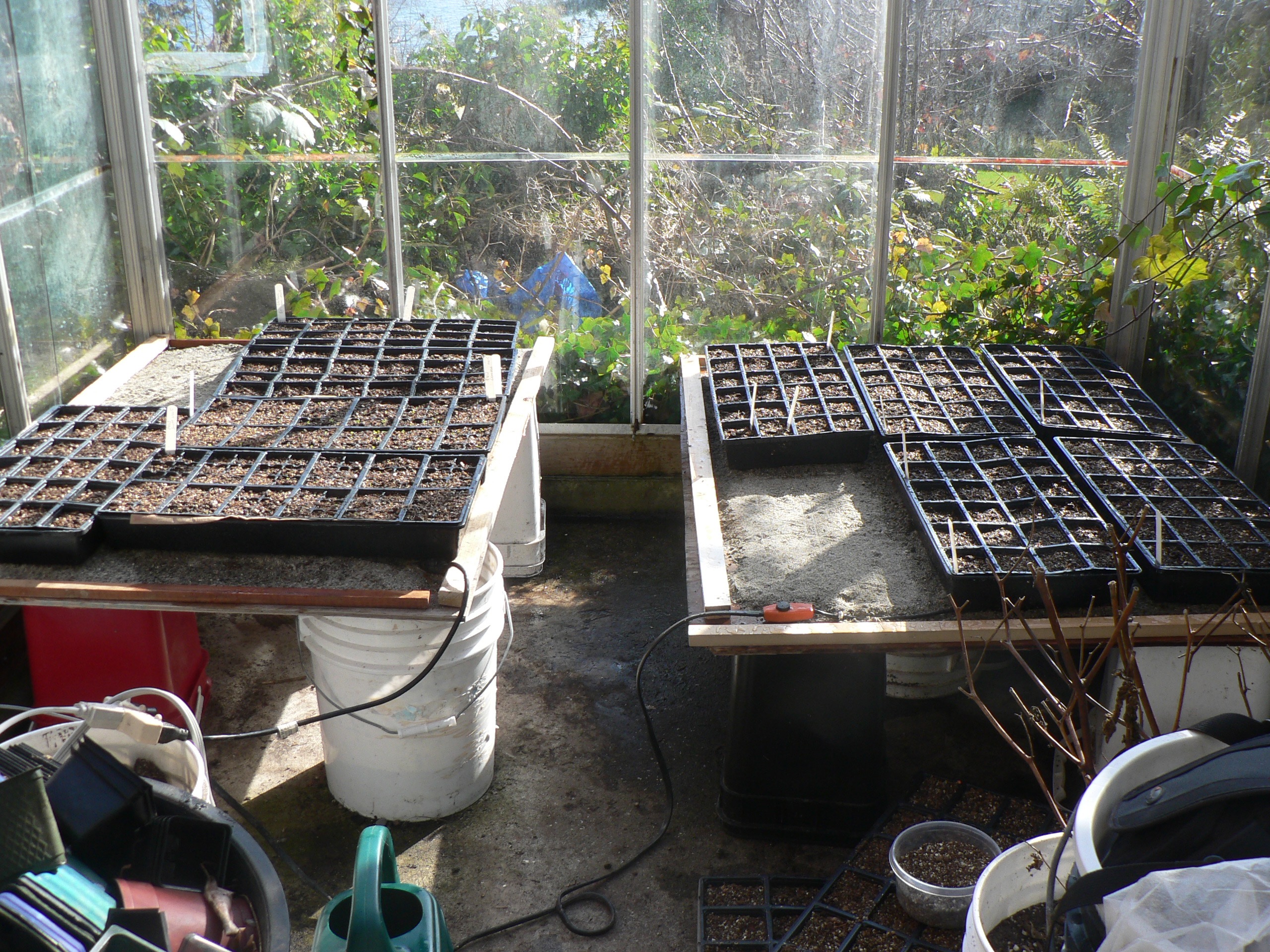Caring for your vegetable seedlings.
By starting vegetable seedlings indoors you have more control over the amount of heat, light and water they get. There are some vegetables that are very difficult to get started outdoors due to unpredictable weather conditions.
Some vegetable seeds need high consistent temperatures to germinate such as tomatoes, peppers, eggplants and basil.
Other vegetables such as lettuce, broccoli and cabbage grow and produce better if they get a head start before the summer heat comes.
My garden site is wet in the spring so I cannot plant early crops; growing my own vegetable seedlings allows me to harvest my vegetables earlier than I would otherwise. Learn how to
start your vegetable seedlings.
Vegetable Seed Packet
Vegetable seed packets have valuable information and the directions are based on research so follow the instructions. It will have the date the seeds were packaged, make sure your purchase the current year seeds.
The packet will describe the variety, the color, the size and height the plant will grow. It will tell you the best time to plant your seed and it has the maturity day which is how long it will take before the vegetable is ready to be harvested.
One of the most important pieces of information is how deep to plant the seed and how far apart they should be if you are directly planting to your garden.
Vegetable Seed Catalog
Seed catalog's will also have valuable information on what temperature specific varieties need to germinate, how long they take to germinate and great suggestions on how to grow great vegetables.
Common questions for growing vegetable seedlings.
Q.How much do I water my seedlings?
Keep them moist but not soggy. Seeds need moisture to germinate and once they sprout they have very shallow roots so it is important they do not dry out.
Q.How much light do my plants need?
Seeds do not need light to germinate however once they have sprouted the seedlings need several hours of sunlight. If you are starting plants in your house place them near a bright window. If you have a cold fame or a greenhouse in a sunny location even better. If you live in a rainy, cloudy climate using a grow light will give you healthier seedlings.
Q.My seeds have not sprouted?
Your seeds may be old and not viable anymore. Seeds are best used within 2 or 3 years. If you have older seeds place them on a damp piece of paper towel and then place this in a zip lock bag. Keep the seeds damp and in a warm spot, on top of a refrigerator is good. Within a few days to a week they should sprout. Plant these in your garden or seedling trays. If they have not sprouted after two weeks, they are not viable so buy some new seeds.
Q.My seeds are new but seem to be taking a long time to sprout, what is wrong?
Some seeds need a certain temperature to germinate so a heating cable may be needed. Some seeds may take from 14-21 days to germinate; onions and parsley take a long time so be patient. Check out what the best conditions are for each vegetable your are growing.
Q.Why are my plants leggy and spindly?
Your vegetable seedlings are not getting enough light. Move them closer to a bright window or use a grow light. It is important to rotate your trays every day so the plants get an even amount of sunlight.
Q.My plants are yellowish and small, what is wrong?
This is a sign your plants are not getting the nutrients they need. Young plants should be a bright green color. Feed them with fish fertilizer or a liquid seaweed. These can be purchased at your local garden center. Read the instructions on how much to use.
Q.My seedlings are thin and breaking off at the base, what is wrong?
This is a soil borne fungus called dampening off. Your plants may be too moist or they are not getting enough air circulation. If they are old enough to be transplanted out, bury the stem deeper to where it is still healthy and they may survive. If they are really young there is not much you can do but plant some new seed, using clean cells and trays.
Q.My seedlings are being eaten, what do I do?
If the leaves of your spinach, lettuce, and other greens is being eaten it is most likely slugs or mice. Check your garden or greenhouse for signs of these pests. Turn over pieces of wood or rocks where slugs can hide and look for any holes in the ground where mice may be.
If the seedlings are in your garden and being eaten at the base it could be cutworms. These usually affect brassica plants such as broccoli, cauliflower and cabbage.
Learn how best to identify and control pests and diseases.
If you have any other questions about your vegetable seedlings please contact me.



